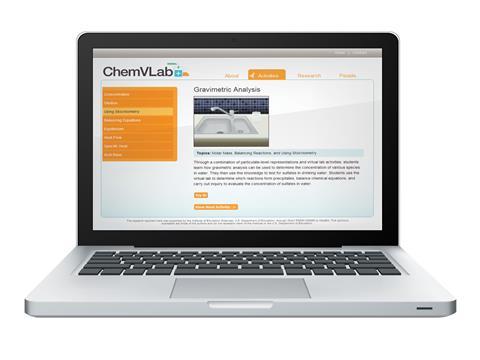ChemVLab+ interactive learning exercises

‘One day you notice that your water tastes funny,’ begins the exercise. Before I know it I have been selected for an internship at a water analysis company. I’m joining senior chemists to design an experiment testing the concentration of ammonium nitrate in a local river.
I’m testing out one of the scenarios on the website of ChemVLab+, a project that has developed a series of interactive learning exercises. These all focus on the ‘two most difficult topics in introductory chemistry’: stoichiometry and thermodynamics.
I chose my scenario from eight different options – each of which is designed to place students in the shoes of professional chemists – from working out how to deal with an oil spill to designing an isotonic sports drink.
Soon I’m deciding where to take my water samples and fumbling my way through some mole calculations. But the cornerstone of the activity is the virtual lab, produced by the ChemCollective, a consortium of researchers lead by David Yaron of Carnegie Mellon University in Pennsylvania, US. The virtual lab is stocked with a range of reagents and glassware – customised for each scenario – that students can select and manipulate. A panel at the bottom reads out the molarity of solutions. After preparing some virtual stock solutions and comparing them with my water sample, I am able to work out if the concentration of assorted contaminants changes in the river water samples up- and downstream of the factories.
There is some evidence that the virtual lab helps students gain a better conceptual understanding of certain concepts in chemistry than textbook problems. In a freely-available essay about the software, published in the journal Science, the developers note that it is possible to be proficient in algebra while not fully grasping underlying chemistry concepts. Students can sometimes solve written problems simply by recalling the algebraic relation between the given information and the required answer. But in the simulated lab students must first decide what information they need to measure or generate in order to answer the problem.









No comments yet